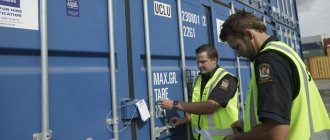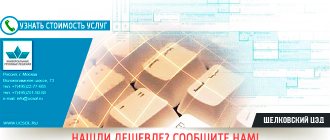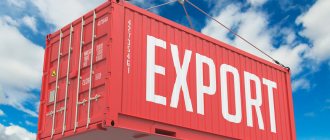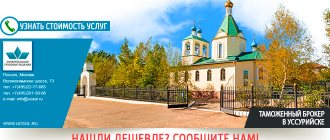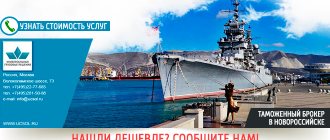- Introduction
- Grounds for carrying out the customs inspection procedure
- Procedure (order) for customs inspection
- Sample form of customs inspection and inspection report
- Time limits for customs clearance and inspection of goods
- Control measures: customs inspection, customs inspection and personal search
- Customs inspection of goods and vehicles
- Customs inspection of goods and vehicles
- Personal inspection
- What is the difference between customs inspection and inspection?
- How is customs inspection of containers performed?
- What does the cargo owner need to know?
- How should cargo owners act during customs inspection?
- Summarize
Grounds for carrying out the customs inspection procedure
In Art. 322 of the EAEU Labor Code states that customs control can take several forms, including inspection and inspection by customs authorities.
According to Article 328 of the EAEU Labor Code, the purpose of customs inspection is the need to obtain and/or verify information about cargo crossing the borders of Russia. This is the official definition, but in reality it is not possible to identify obvious reasons for conducting customs inspections, as opposed to the use of other forms of control. While the basis for customs inspection is usually the importation of goods by the declarant for the first time through a specific post or generally into the territory of the Russian Federation.
Procedure (order) for customs inspection
The main objectives of customs inspection/inspection are to control:
- actions of persons who perform customs clearance, for their legitimacy;
- the reliability of the information specified in the customs declaration and accompanying documents;
- movement of goods according to the customs procedure chosen for the given cargo;
- use of goods in accordance with authorized procedures;
- compliance with the rules (including restrictions) on the use of conditionally released goods.
According to Article 327 of the EAEU Labor Code, a visual inspection of cargo can be carried out without opening the packaging or other means of violating its integrity. This procedure is called customs inspection and is carried out with the aim of obtaining or confirming information about the goods being inspected and the presence of various means of identification (customs stamps, seals).
Possible without the presence of the declarant, his representatives and other persons, unless these persons express a desire to take part in the procedure. The results of the customs inspection are reflected in the corresponding act drawn up during the procedure or immediately after it. If the cargo's compliance with legal standards is positively assessed, the goods are released.
Inspection, unlike inspection, involves a thorough check of the cargo. As stated in Art. 328 of the EAEU Labor Code, customs inspection of goods consists of carrying out control actions in relation to the declarant’s cargo in specially equipped customs control zones or in other places chosen by officials.
The customs control zone is a specially designated area, isolated by a fence and guarded. In this area, areas for storing cargo in the open air are temporarily or permanently equipped, covered warehouses are erected, vehicle parking is organized, and administrative buildings of the customs authority are located. Entry and entry into the closed area is possible only through a checkpoint.
The procedure for customs inspection depends on the specific conditions and grounds for it. It can be carried out through a visual inspection, taking the necessary measurements, clarifying the weight, unpacking, disassembling the goods, using an oral interview. If necessary, packages (including factory ones) are opened in violation of their integrity and identification to check the name of the product, its quantity, quality, country of origin and other information.
Some operations may be carried out by invited specialists under the direction of the official responsible for customs inspection. Sniffer dogs may be used to identify hiding places and prohibited goods. Dangerous goods are opened only in appropriate conditions and in the manner established by the legislation of the Russian Federation.
Depending on the amount of probable damage, the procedure is carried out by customs authorities of different levels of competence. These may be customs posts, where short-term situations are usually resolved quickly and positively. This could be a federal customs service for work with high risks, requiring special powers and allowing the introduction into the control system of measures to prevent violations of laws in such cases throughout the state.
The standard procedure for organizing inspection applies to most cargo (special legal acts apply for special conditions). The procedure can be carried out in the presence or absence of the owner of the cargo or his representative (declarant), other authorized persons and their representatives.
There are cases in which at certain stages the presence of witnesses is necessary (for example, if those who, according to the customs code, must be present, are absent, or when a potential danger in connection with the cargo is identified, etc.).
Important!
After applying any form of customs inspection and release of goods, customs control is not considered completed. Within three years from this moment, the customs authority has the right to raise declarations and conduct re-inspections. Despite the fact that such verification is possible within 3 years after the release of the cargo, the storage period for customs documents is 5 years.
Customs control after the release of goods is carried out in accordance with Art. 331 Labor Code of the EAEU. The inspection can have the properties of a desk or field inspection, which can be counter, unscheduled and according to plan. Its purpose is to confirm the accuracy of the information provided in the declaration for imported goods, the intended use of the goods and the fulfillment of all conditions in relation to special cargo, for example, with conditional release. The information is compared with accounting documents and bank statements.
Moreover, the activities of the declarant, duty-free shops and other facilities related to the import of cargo can be checked. Authorized regulatory authorities seek to identify violations in this way and prevent illegal circulation of goods on the domestic market.
Sample form of customs inspection and inspection report
Samples of basic customs documents can be found here. Among them:
- Notification of customs inspection. Sent by the inspector during remote release to prepare an order after establishing the location of the goods and the declarant. Also, it can be sent if the release is conditional, partial, suspended, or secured. The document indicates the place, date and exact time of the procedure, and describes the property (vehicle) being inspected. The notice will require the declarant to be present during the inspection (or indicate the option not to be present). The declarant must respond to this notice with confirmation of its receipt.
- Requirement to present goods. On a standard form, the declarant is notified of the need to present goods (the numbers of containers and vehicles are indicated) to the customs control zone for its implementation. The time and place where the inspection will take place is announced. The presence of the declarant may be optional, which is also stated in the document.
- Requirement to carry out transactions in relation to goods and vehicles. Sent to the declarant if it is revealed that the goods are not separated by type, name in the package, or there is no marking in the transport documents. The form lists all operations that should be carried out in relation to cargo under customs control. When filling out, the necessary items are highlighted and the reason for performing the procedure is indicated. As usual, the document contains information about the date of preparation, the sender and the recipient. The declarant must respond with a notice of completion of the required operations or a refusal to carry them out.
- Customs surveillance report. It is a document in the header of which the name of the customs authority performing the procedure is indicated. The content begins with indicating the exact start/end time of the observation, the name of the performer, the location and the basis for it. The conditions (direct visual inspection by a customs officer or inspection using technical means) and the process are briefly described. The result is certified by the signature of officials and inspected persons. Photographs, videos, statements of the person being inspected and/or persons present during the inspection may be attached to the customs inspection report.
Who handles customs clearance?
You can register as a foreign trade participant and independently collect documents, submit a declaration, pay all amounts due and interact with customs. In this case, all responsibility will be on you. Moreover, for another three years after the release of the cargo, customs has the right to conduct an inspection and make sure that everything was processed correctly.
If you have never encountered customs clearance before, then at least the first deliveries should be processed with the help of professionals - customs brokers. They will not only fill out the declaration correctly, but will also tell you what documents need to be prepared for the successful release of the cargo, calculate the amount of payments, minimize the risk of cargo delay and take care of communication with customs. Moreover, the responsibility will also lie with the broker: the customs office will come to him with the inspection.
If you are sending cargo via postal services (for example, UPS or DHL), you can count on assistance from their accredited customs brokers. However, postal services will not undertake customs clearance of complex and non-standard shipments.
Time limits for customs clearance and inspection of goods
The timing of customs inspection depends on the specific conditions of its implementation, the scope of work and the type of control. Conducting a customs inspection or inspection can last several minutes, hours or several working days. In addition, the legislation provides for an extension of the period if it is necessary to obtain additional information and carry out mandatory procedures.
Authorized customs officials must carry out the inspection no later than the end of the working day following the day on which the declarant was notified of the declarant’s readiness to present the cargo and a decision was made to conduct a customs inspection.
Where should the completed form be submitted?
If customs officers detect smuggling, illegal movement of goods and prohibited items across the border or another offense, then one copy is attached to the criminal or administrative case, and the second is handed or sent to the violator.
If customs officers do not identify any violations or prohibited items or substances, then the completed customs inspection report is stored at the customs office and then (after the established period) is destroyed. The second copy is given to the owner of the cargo (luggage) or the citizen who has undergone personal inspection. He can keep such paper as a keepsake or throw it away.
Control measures: customs inspection, customs inspection and personal search
In Russia, when crossing the border, a vehicle carrying commercial cargo or personal property may be subject to inspection, inspection by customs authorities, or other forms of control at the customs post. The difference between them lies in the reasons for application, timing, and verification procedure.
Customs inspection of goods and vehicles
According to Article 327 of the EAEU Customs Code, customs inspection of goods consists of a visual inspection of goods and vehicles for compliance with accompanying documents and declared information. Also, the presence of mandatory customs seals and stamps is confirmed. With this type of customs procedure, containers and cargo boxes of vehicles are not opened, and the integrity of the cargo packaging is not compromised. The inspection is carried out at the customs post, both in the presence (optional) of the declarant and/or his representatives, and in their absence. The results are documented in a report or in the form of notes in documents confirming the procedure.
Important!
One of the copies of the customs inspection report is sent to the declarant or his representative.
Customs inspection of goods and vehicles
According to Art. 328 of the EAEU Labor Code, customs inspection of goods and vehicles begins with the arrival at the place of its implementation of an authorized official, who checks the possibility and grounds for other persons to be present during the operation, confirms the presentation of the cargo for customs inspection. It is this customs officer who determines the inspection mechanism, decides on the start of the procedure and the conditions for its implementation.
Optimally, the duration of the inspection is determined by the number of inspected vehicles, wagons, cargo positions and the number of resources involved in the procedure (inspection employees, loaders, equipment). The start is considered to be the exact time when an authorized customs officer begins a visual inspection of the goods. Already at this stage, the period for customs inspection at customs control can be extended if packaging violations are detected or information about packaging (labeling) is indicated in the accompanying documents.
In such circumstances, the declarant is issued/sent a request to carry out transactions in relation to goods and vehicles. The request may be refused by a person having the necessary authority.
If the work is not completed within one working day (or it has to be interrupted for another reason), then the customs officer must ensure the safety and integrity of the cargo until the next stage, while maintaining it in the condition in which it was at the time of suspension of the procedure .
The final results are recorded in a customs inspection report or documented in another way permitted by industry legislation. The act must indicate the reasons on the basis of which the customs inspection is carried out without the participation of the declarant or his representative (if this took place), provide information about the officials who carried out the procedure, and about those who were present during the procedure. Also, a separate paragraph of the document is a detailed description of the results of customs inspection.
Important!
One copy of the customs inspection report is sent to the declarant or his representative.
Personal inspection
According to Article 329 of the EAEU Customs Code, customs inspection at customs control can be applied to an individual crossing the border of the Russian Federation if there are grounds for suspicion that the declarant is violating customs legislation. It is carried out in the transit or customs area of the international terminal of an airport or railway station.
This form of control is called personal search and is applied in accordance with a written decision of the head of the customs authority.
Before starting the procedure, the customs official offers to release the undeclared cargo and informs the declarant of the decision to conduct a personal search, as well as of his rights and obligations. The declarant must confirm in writing his consent to the procedure or refuse it, leaving a corresponding inscription on the decision.
The procedure for personal customs inspection provides for the procedure to be performed by an official of the same sex as the declarant in the presence of two people of the same sex acting as witnesses. The inspection is carried out in the correct format in a room closed from prying eyes.
If there are grounds for examining the physical body of the person being examined, then a medical specialist is invited who can conduct the examination manually and/or using medical equipment and instruments.
If the person being searched is an incapacitated person or a minor teenager, then parents, guardians and other authorized representatives accompanying the declarant or arriving upon request must be present during the search.
Important!
The person being searched must not suffer as a result of the search. The health, dignity and property of the declarant must not be damaged.
The declarant (individual) in the status of an inspected person must:
- communicate with a customs officer in your native language or have the right to an interpreter;
- voluntarily admit a violation of customs legislation, if any, and hand over undeclared goods that are transported across the border illegally;
- be informed of the relevant decision and know your rights/responsibilities;
- provide the necessary explanations, submit petitions if desired;
- read the report drawn up based on the results of the personal search;
- get the opportunity to express your desire to make changes to the act or clarifications;
- appeal the actions of customs officers after completing the personal search procedure.
The report must be drawn up in the approved form in 2 copies during the inspection or immediately after its completion. Comes into force after signing by the customs officer who conducted the inspection, witnesses, a medical specialist if a medical examination was performed, and the individual who was subjected to the inspection.
When conducting a personal search of citizens, it is important to know that the decision to carry out the procedure is not made by the inspector. To initiate the procedure, you need a written order from the head of the customs post, who is required to sign his order.
If an inspector, when checking the identification documents and declaration of an individual crossing the border, identifies signs of a violation of the law, he must draw up a report addressed to the boss and describe these signs. After which, and on the basis of this report, the boss approves the decision. The person being inspected should insist on carrying out the inspection in the customs control zone - in a room in which sanitary and hygienic requirements are met.
During the inspection, ethical standards must be observed, taking into account the interference of strangers in the personal space of a citizen.
Important!
The person being searched has the right to demand that video and photographing be stopped before the person being searched takes off his clothes.
What is the difference between customs inspection and inspection?
Customs inspection and customs inspection of cargo and/or vehicle are used to obtain additional information about the legality of importing cargo into the territory of Russia in accordance with the customs code. The main difference between them is the basis for conducting and the order of conducting.
Customs inspection is a superficial visual inspection of the cargo, appointed by the releasing inspector, mainly upon the first import of goods into the territory of the Russian Federation, without compromising the integrity of its packaging, sufficient to confirm compliance with the basic parameters of the information specified in the accompanying documents. The declarant may be present or refuse to be present during the procedure. Given the extreme simplicity of the verification, the declarant does not bear any costs associated with its implementation.
Customs inspection is a complete inspection of the cargo ordered by an automated risk management system that determines the need for it after a customs declaration has been submitted. Also, the basis for the procedure may be damage to identification means installed at the border, or information received at the customs post about a violation of the law. The inspection includes a visual inspection, removal of seals, opening of packaging, disassembly of selected goods, search for hiding places and other evidence of violation of customs legislation. The intensity and depth of the review varies.
Test weighing, determination of the number of packages, items in one place, determination of the qualities of cargo with possible disassembly, sampling, etc. can be performed. Photographs of 100% and in-depth inspections are often carried out. The declarant is required to be present at the customs inspection. This procedure is accompanied by additional costs associated with storing cargo at a temporary storage warehouse, loading and unloading operations, weighing and other similar actions.
To summarize, the main difference between customs inspection and customs inspection of goods is the degree of impact on the cargo, the thoroughness and scope of the inspection. Often, customs inspection precedes inspection or, as already indicated above, is part of it. Products, vehicles, and the premises in which they are located can be inspected.
We will deliver and clear the cargo through customs!
Call us
Who faces customs clearance?
Foreign economic activity is the lot of not only huge corporations, but also medium and small businesses. Below are examples of situations where you will need to consider the need for customs clearance when planning your affairs:
- You decided to buy a product directly from a foreign manufacturer, bypassing distributors, because they sell at a cosmic markup or because this manufacturer is not represented in Russia at all;
- The volume of orders has increased, and now you need a larger volume of imported components, fittings and other consumables. Taking into account the new scale of purchases, it will no longer be possible to register a purchase for an individual “for personal needs” - customs will not allow the goods through;
- Instead of new equipment or machinery, you decide to buy used equipment in Europe;
- Your machine is broken and can only be repaired at a foreign manufacturer;
- You are going to an exhibition abroad and taking with you samples of equipment or any other large-scale products;
- The fall in the ruble exchange rate spurred you to work for a foreign audience, and now you sell goods abroad to both individuals and companies.
Incorrect customs clearance can cost not only wasted time and money, but also threaten with an administrative violation case. If the amount of lost customs payments exceeds 2 million rubles, then a criminal case may be initiated.
How is customs inspection of containers performed?
Containers undergo customs clearance in several stages. To begin with, they are registered at the customs post before the cargo arrives at the destination port/terminal. An application is submitted to enter information about the cargo into the database. When containers arrive at the port/terminal, the authorized accompanying person fills out the declaration and submits it to customs along with commercial and transport documents.
All customs clearance procedures are carried out, including cost calculation, assignment of HS codes, payment of duties and fees.
If the cargo will be delivered to its destination in Russia in containers, the declarant must obtain permission for internal transit. At the same time, customs officers have the right to conduct customs inspection of the container as part of general customs control.
A visual inspection or inspection may be carried out that violates the integrity of the packaging.
Operations necessary to obtain the required information are paid by the consignee. The scope of work depends on the scope of the inspection. Frequently, the cargo is unloaded from the container, weighed, positions are recalculated, the characteristics of the goods are inspected, and the inspected cargo is loaded into the container.
This procedure can be carried out by customs officers after the customs declaration has been submitted, and in the presence of the declarant and/or his representatives. The results of inspection or inspection of containers are described in the relevant report.
The cost of unloading and loading depends on the transport companies that offer their services at container terminals. It is possible to carry out loading work using your own loaders, but in any case you have to rent equipment from ports and terminals. Even with these costs, the savings compared to a third-party turnkey service are significant.
As for storage, there are often customs brokerage companies operating on the territory of container terminals and customs posts that offer services for organizing storage, processing documents and resolving administrative issues.
The cost is usually moderate, since there are usually a lot of clients, so due to volumes, contractors manage to ensure high profits.
Thus, the official inspects the containers, checking that the documents are correctly drawn up and that the data in them corresponds to the factual information.
What does the cargo owner need to know?
When carrying out foreign economic transactions, the owner of the cargo should remember that the activities of the declarant for three years after importation of the cargo are under the control of the customs authorities, therefore, customs inspection of the cargo can be carried out after release.
The compliance of the enterprise engaged in foreign economic activity with customs legislation is checked. This is normal practice in the form of desk and on-site inspections, in the context of which the inspector can conduct an oral interview, request documents, conduct customs surveillance, use other technical means to identify vehicles, goods, accompany those cargoes that are at customs at the time of inspection or will pass through a customs checkpoint.
When fulfilling its official obligations, the Customs Service is guided by the Constitution of the Russian Federation, federal laws, acts of the President and Government of the Russian Federation, as well as international treaties and the Customs Code of the EAEU. And although customs clearance must be completed on the working day (no later) that follows the day of registration of the customs declaration, the duration of the procedure can be increased if inspection requires examination of the goods and clarification.
Important!
In any case, as a result, the declarant or his representative must receive a document on customs inspection or inspections in another form, confirming the legality of crossing the border.
Governing legislation
Desk customs inspection as a legal category was introduced by the Customs Code of the Customs Union (CU CU), which came into force on July 6, 2010 and began to operate in the common customs territory of Russia, Belarus and Kazakhstan. Due to the fact that the CU has become a structure within a larger interstate association - the EAEU, which several more states have joined, this code is planned to become a new document, the jurisdiction of which will extend to all EAEU countries.
For more information about the establishment of a new structure, the EAEU, on the basis of the Customs Union, read the article “Since 2015, the Eurasian Economic Union has been operating instead of the Customs Union .
Thus, on December 18, 2014, the draft EAEU Customs Code was sent for consideration to the governments of states that were at that time members of the Customs Union and the Common Economic Space (since 2015 - the EAEU).
It was initially assumed that the entry into force of the new EAEU Labor Code would occur on 07/01/2017 (agreement on the EAEU Labor Code dated 04/11/2017). But subsequently, the Eurasian Economic Commission (EAC) announced the postponement of this deadline to 01/01/2018.
The new Customs Code (EAEU Customs Code) provides for:
- simplification of customs procedures for business;
- transfer of a number of powers to the EEC level;
- use of modern information technologies (rejection of paper declarations and the need to submit a package of accompanying documents);
- minimizing physical contact between foreign trade participants and officials, etc.
But while the new Customs Code of the EAEU has not entered into force, the current source of law regulating the procedure of desk customs inspection is the Customs Code of the Customs Union (as amended on 05/08/2015) (annex to the Agreement on the Labor Code of the Customs Union, adopted by the decision of the Interstate Council of the EAEU at the level of heads of state dated November 27, 2009). The main provisions related to the procedure under consideration are contained in Chapter. 19 TK TS.
How should cargo owners act during customs inspection?
Customs should strictly adhere to existing rules in order to speed up customs clearance and not create a pretext for conducting a customs inspection with a biased check of the entire cargo or a selected container. Commercial cargo crossing the border of the Russian Federation is subject to customs control in various forms. If regulatory requirements are met, the procedure can only take a few hours, so it is important to prepare the correct package of documents and provide reliable, comprehensive information about the product. Violations may lead to delays at the border and administrative penalties.
Customs inspection of the container, as well as inspection, is carried out in accordance with the provisions of the Customs Code of the Russian Federation. The declarant should know his rights and obligations in order to prevent unlawful actions on the part of customs officers and at the same time not violate the law, which could lead to confiscation of property in the worst case.
If the declarant (entrepreneur or large company) does not specialize in foreign economic activity and does not constantly carry out export-import operations, then it is economically feasible to delegate the authority for customs clearance and, consequently, accompanying the cargo during customs inspection/inspection to experienced customs brokers.
Summarize
The article describes in detail the inspection and inspection procedures at the customs post, the purpose of which is to establish the legality of cargo crossing the customs border of the Russian Federation (or the Customs Union). All objects of customs control are subject to inspection with varying degrees of intensity.
The basis for a 100% inspection may be a decision of the customs authorities, which cannot be systematized. Suspicion may be aroused by anonymous information, an accidental reason for selective control, or objective obvious reasons - identified violations in the preparation of accompanying documents, filling out a declaration, means of identification, etc. It is important that the results of the customs inspection are presented in documents (usually in the form of acts of the established form) , signed by a representative of the inspecting authority and the person being inspected.
07.06.2021
Types of inspection
The concept of inspection is divided into two categories. The first is related to the grounds (risks) of its implementation , and here the following types are distinguished:
- main – the usual procedure determined by the technology of checking the customs declaration;
- a repeat is carried out to check and clarify data on the main check already carried out;
- directed to verify information about the movement of goods and vehicles in violation of established prohibitions and restrictions, as well as to detect facts of concealment from customs control;
- identificational.
The second category defines various degrees of inspection of goods and vehicles. Among them:
- verification with recalculation of cargo items and their weighing;
- with selective opening of cargo packages;
- with the opening of all cargo packages;
- with recalculation of the number of goods in cargo spaces and other inspection options.

